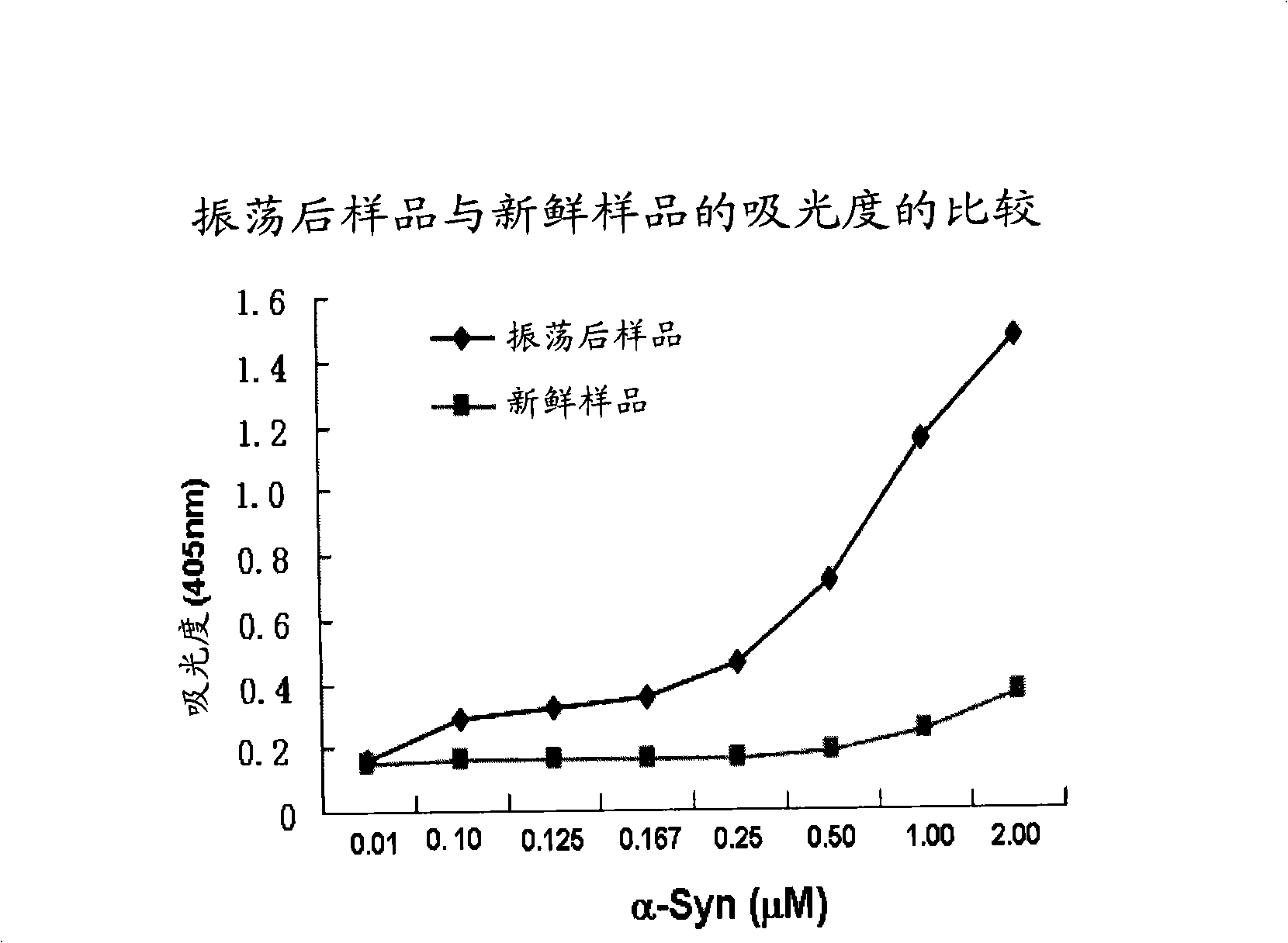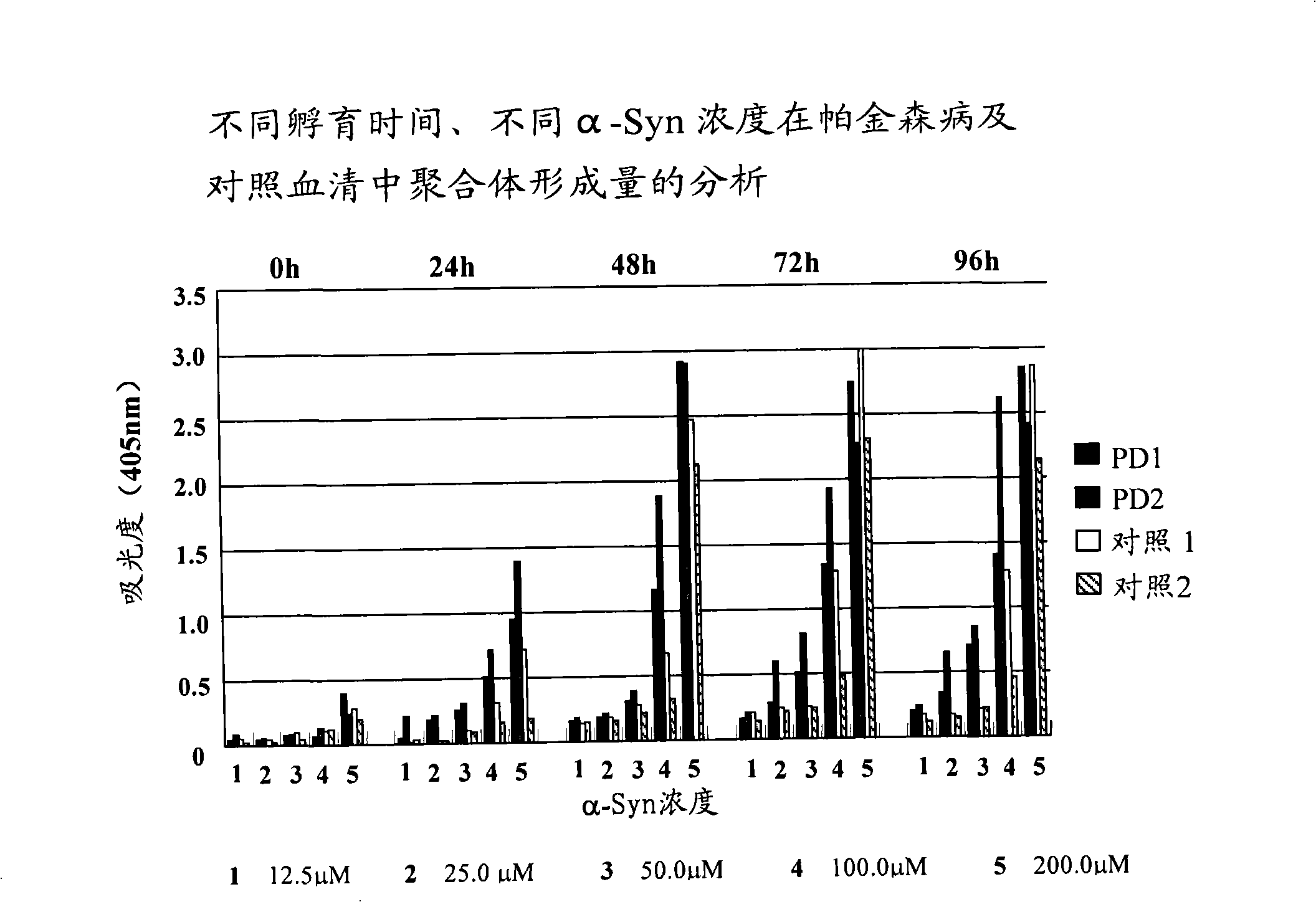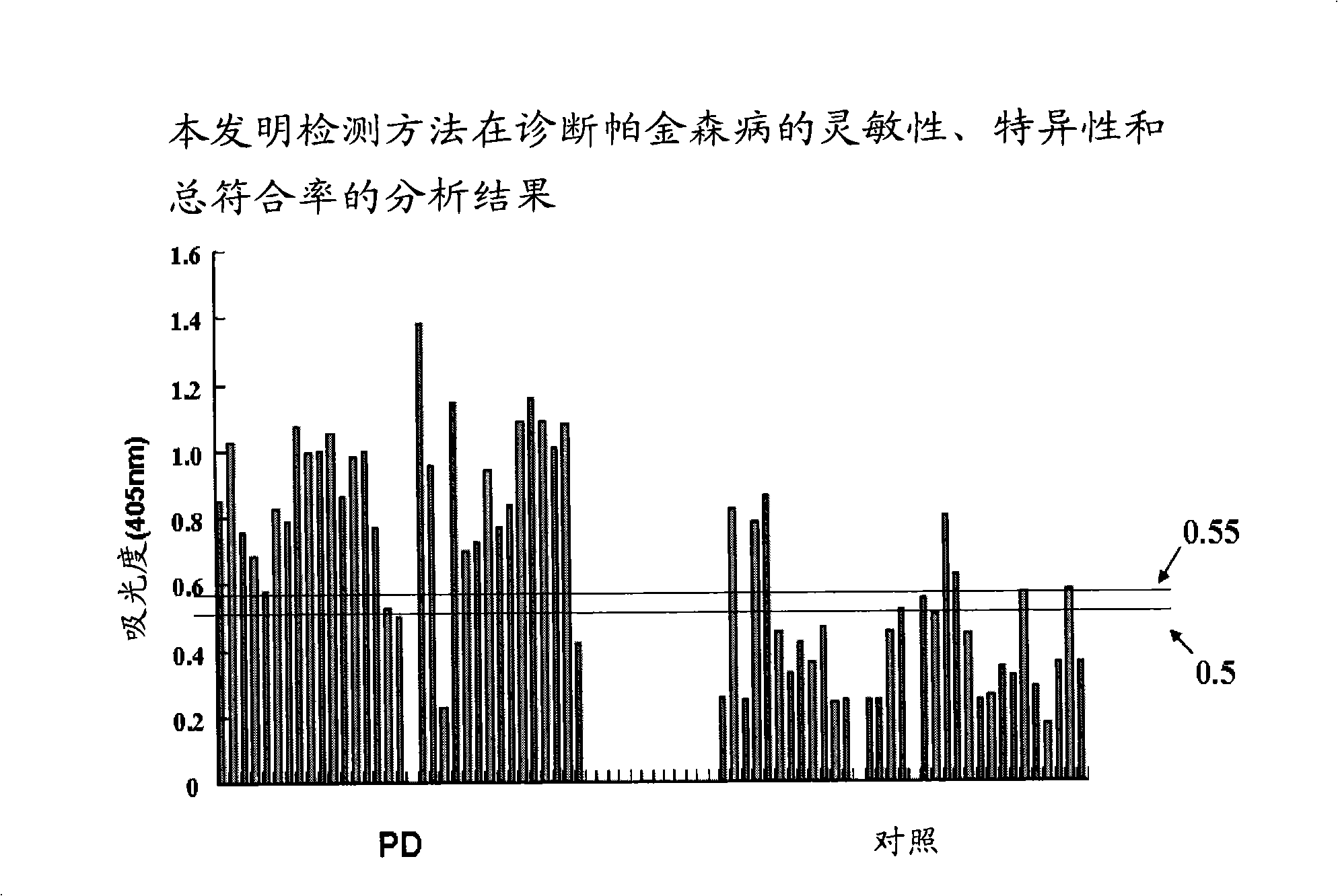Method for detecting subject humoral disease related protein polymerizing power
A technology of related proteins and aggregation ability, which is applied in the field of in vitro detection of aggregation ability of disease-related proteins in body fluids of subjects, can solve problems such as unclear, decreased total content of α-synuclein, increased total content, etc., to achieve easy acceptance , Simple operation, and the effect of improving sensitivity
- Summary
- Abstract
- Description
- Claims
- Application Information
AI Technical Summary
Problems solved by technology
Method used
Image
Examples
specific Embodiment approach
[0027] According to a specific embodiment of the present invention, the process flow of the method includes:
[0028] First, a sample of bodily fluid is taken from the subject. The subject as the body fluid sample source of the present invention can be clinically diagnosed PD patient serum or plasma (H-Y stage in I-IV), aged 40-70 years old, and the control body fluid sample can be a normal healthy physical examination 40- 70-year-old middle-aged and elderly people or other age-matched non-PD patients. In the present invention, bodily fluids may be, for example but not limited to, blood and cerebrospinal fluid. Methods for extracting body fluid samples are well known to those skilled in the art. The level of α-synuclein in the blood of normal people and patients is very low, and the content of α-synuclein oligomers in the blood of patients is very low, so it is difficult to directly measure the content of α-synuclein oligomers big. Since the method of the present invention i...
Embodiment 1
[0042] Body Fluid Sample Preparation
[0043] In the present invention, the body fluid sample is illustrated by taking serum as an example, but those skilled in the art should understand that the method for preparing body fluid samples using other body fluids such as cerebrospinal fluid is similar.
[0044] In this example, serum was obtained from 34 clinically diagnosed PD patients (17 males, 17 females, aged 54-82 years, with an average age of 65.4 years), while control serum was obtained from 5 healthy individuals with normal physical examination (3 males, 2 females, mean age 60 years). In this example, the volume of extracted serum was about 20 μL.
[0045] Prepare PBS solution
[0046] The composition of the PBS solution used in the present embodiment is as follows:
[0047] KCl
0.1g
K H 2 PO 4
0.1g
Na 2 HPO 4 .12H 2 o
1.45g
NaCl
4g
DDW (double distilled water)
500mL
[0048] The com...
Embodiment 2
[0083] In this example, the detection method and steps are the same as in Example 1, except that the volume of extracted serum is 40 μL.
[0084] As a result of the detection, the aged (oscillating) sample contains synuclein oligomers, and the kit of the present invention does not recognize fresh samples (mainly containing monomers) before 200-fold dilution of the sample, but recognizes aged samples (containing oligomeric body), but when the concentration is higher than 200 times, since oligomers can also be formed in fresh samples, the content of oligomers increases with the prolongation of the shaking time, and the trend of absorbance increase occurs, which illustrates the present invention The kit mainly recognizes oligomers.
PUM
 Login to View More
Login to View More Abstract
Description
Claims
Application Information
 Login to View More
Login to View More - R&D
- Intellectual Property
- Life Sciences
- Materials
- Tech Scout
- Unparalleled Data Quality
- Higher Quality Content
- 60% Fewer Hallucinations
Browse by: Latest US Patents, China's latest patents, Technical Efficacy Thesaurus, Application Domain, Technology Topic, Popular Technical Reports.
© 2025 PatSnap. All rights reserved.Legal|Privacy policy|Modern Slavery Act Transparency Statement|Sitemap|About US| Contact US: help@patsnap.com



